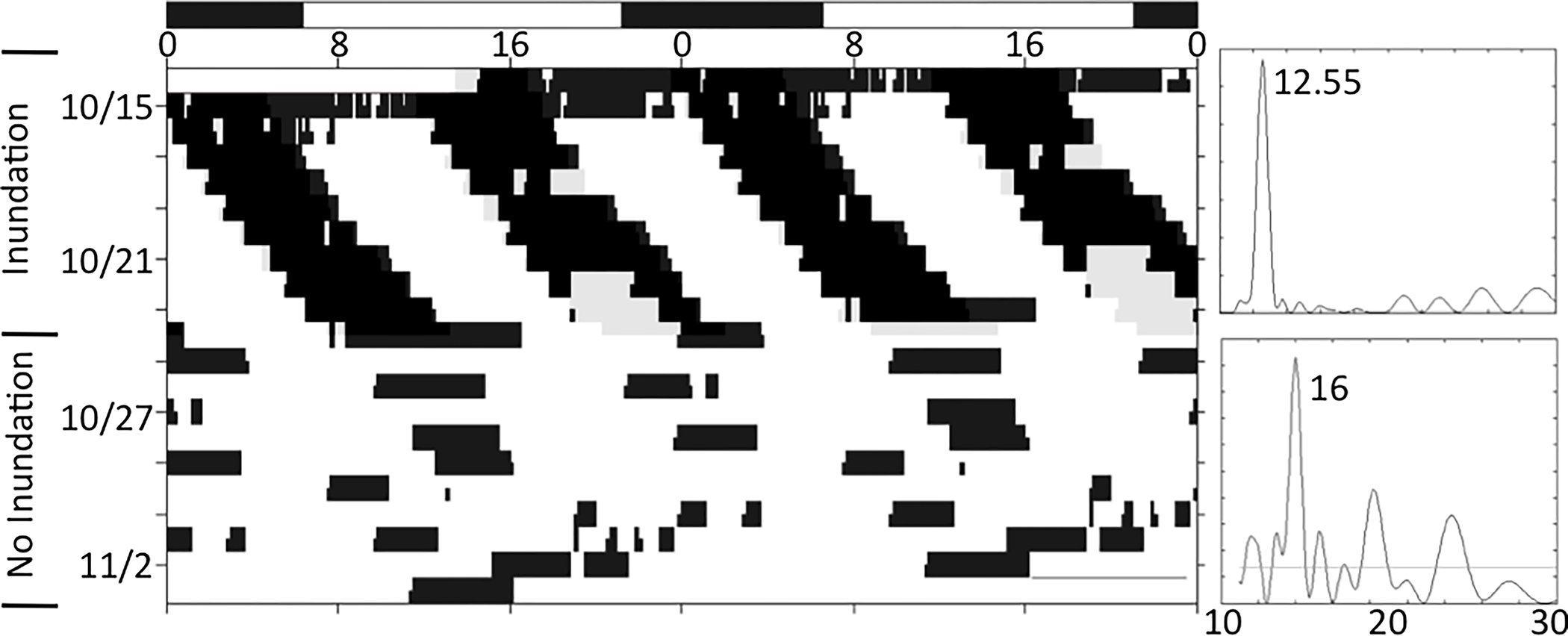Figure 5.

Apparent masking of the locomotor activity of a juvenile horseshoe crab exposed to LD, and then DD. Initially, this animal exhibited mixture of tidal and diurnal patterns of activity, showing two rhythms with different periods. These are also indicated in the periodogram, which shows two periods: one at 12 h and one at 24 h. When not exposed to LD cues, this animal reverted to four bouts of activity daily, or a circatidal rhythm. These bouts of activity were unequal in duration, which is one indicator of a circalunidian rhythm. Refer to Figure 1 for detailed description of figure components.
